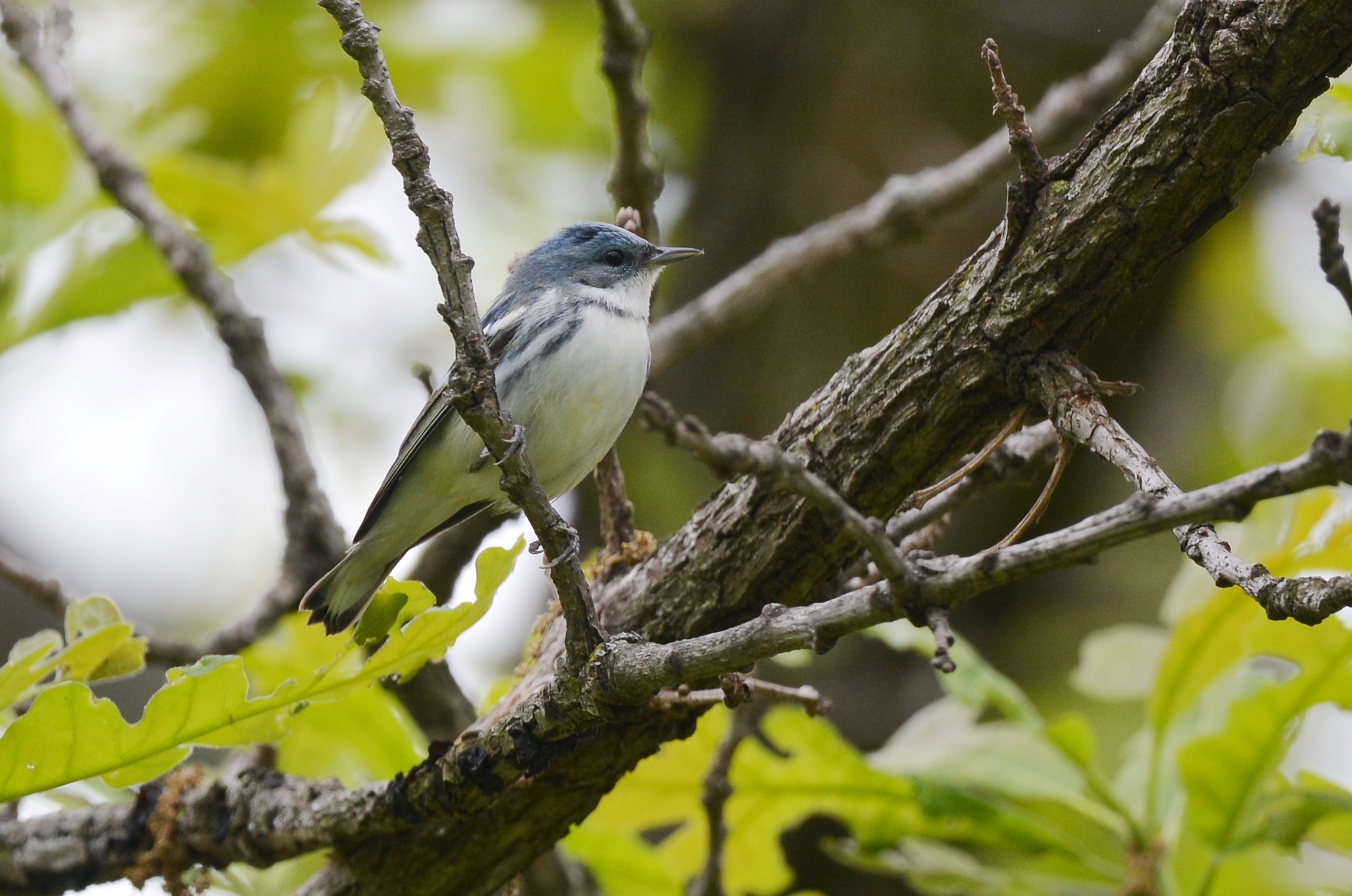The Ups And Downs Of Bird Tracking Devices
3:57 minutes

New work published in the journal The Condor indicates that even those lightweight tags may have ill effects on the birds, however. While cerulean warblers tagged with geolocators seemed to fare as well as control birds during the breeding season, fewer of the tagged birds returned the following year in the next migration cycle. Bridget Stutchbury, a researcher who uses geolocator tags but who wasn’t involved in the study, describes the possible good and bad of the tracking technology.
[How do you track nighttime bird migrations? With sound.]
Bridget Stutchbury is a Distinguished Research Professor in the Department of Biology at York University in Toronto, Ontario, Canada.
IRA FLATOW: And now it’s time to play Good Thing, Bad Thing.
[MUSIC PLAYING]
Because every story has a flip side. Many of the songbirds you know and love migrate. They travel hundreds of miles in a year, but not a lot is known about where they go and how they get there. So researchers attach little devices called geolocators to the birds. These are little electronic chips that can record the birds’ movements.
But a new study, published in the American Ornithological Society Journal, The Condor, says there may be a downside to this. Bridget Stutchbury, a research professor in the Department of Biology at York University in Toronto, is with us now. She’s an expert in these geolocator devices. She was not involved with the current study but she knows all about this kind of stuff. Welcome to Science Friday, Bridget.
BRIDGET STUTCHBURY: Hello. Thank you.
IRA FLATOW: Describe what the locator actually is.
BRIDGET STUTCHBURY: Well, it’s a tiny little tag, smaller than the fingernail on your pinky finger, and it weighs far less than even a penny. So the smallest ones are only about half a gram. And they attach on the back of the bird like a backpack, going around the legs, sort of a waist harness, and they tell you where the bird has been on migration. They detect sunrise and sunset times. And when the bird comes back, you download the data, and you can reconstruct the migration route.
IRA FLATOW: Hmm. So that’s the good news about this?
BRIDGET STUTCHBURY: Yes. So it’s really important to track these birds, because so many species are in really steep decline. Migration has always been dangerous, and it’s even more so today with all the light pollution, and buildings, and deforestation. So we need to find out what routes these birds take and where they winter so we can save those habitats and help protect the species.
IRA FLATOW: Mm-hm. But this new study found that there may be some cost involved here.
BRIDGET STUTCHBURY: Especially for smaller birds, like the one they studied, the cerulean warbler. It seems to be that even carrying this small tiny weight is enough to reduce their survival. So this one study that we’re talking about found that the return rates of birds carrying the tags is only 50% of the birds that didn’t have the extra luggage to cart around.
IRA FLATOW: One half of the birds never made it back? Wow.
BRIDGET STUTCHBURY: Yeah.
IRA FLATOW: Well, do we know why that is?
BRIDGET STUTCHBURY: Yeah. It’s pretty normal in– these small birds have a short lifespan anyway. So under the best of cases, less than half the birds survive migration. But if you put a geolocator on them, then only a quarter of them survive. So it’s quite a significant reduction in survival, and we don’t really know why they’re not surviving because– well, we know they didn’t come back.
IRA FLATOW: Could it be that they’re so tiny that the these tags get in the way of them flying or air resistance or something like that?
BRIDGET STUTCHBURY: Well, one study was done in a wind tunnel, showing that– these geolocators, they have a little stalk that sticks up so that they can detect light levels, and it’s thought that that might interfere with the good aerodynamics.
You know how airplanes are nice and sleek and smooth? Well, so are birds. And so we think that these tags could possibly increase the energetic cost of migration, and maybe they just run out of energy at the worst possible time.
IRA FLATOW: So it’s then just a judgment call on whether using these is a good idea.
BRIDGET STUTCHBURY: Well, certainly for the larger birds– like I’ve studied wood thrushes and Purple Martins and tagged hundreds of birds with geolocators, and we’ve shown the survival rate is just fine. So I think the larger birds are able to carry the extra load. It’s the smaller ones that seem to have trouble. So you want to make sure you keep the numbers that you tag relatively low and to be really sure you know that you have an important question that you need answered.
IRA FLATOW: Dr. Stutchbury, thank you for joining us.
BRIDGET STUTCHBURY: Yeah. You’re welcome.
IRA FLATOW: Bridget Stutchubury, a distinguished research professor in the Department of Biology at York University in Toronto, Canada.
Copyright © 2017 Science Friday Initiative. All rights reserved. Science Friday transcripts are produced on a tight deadline by 3Play Media. Fidelity to the original aired/published audio or video file might vary, and text might be updated or amended in the future. For the authoritative record of ScienceFriday’s programming, please visit the original aired/published recording. For terms of use and more information, visit our policies pages at http://www.sciencefriday.com/about/policies/
As Science Friday’s director and senior producer, Charles Bergquist channels the chaos of a live production studio into something sounding like a radio program. Favorite topics include planetary sciences, chemistry, materials, and shiny things with blinking lights.